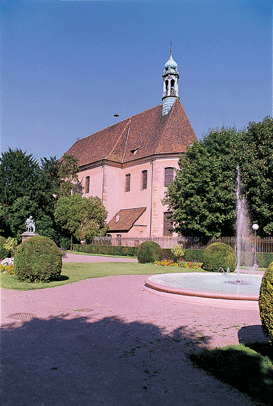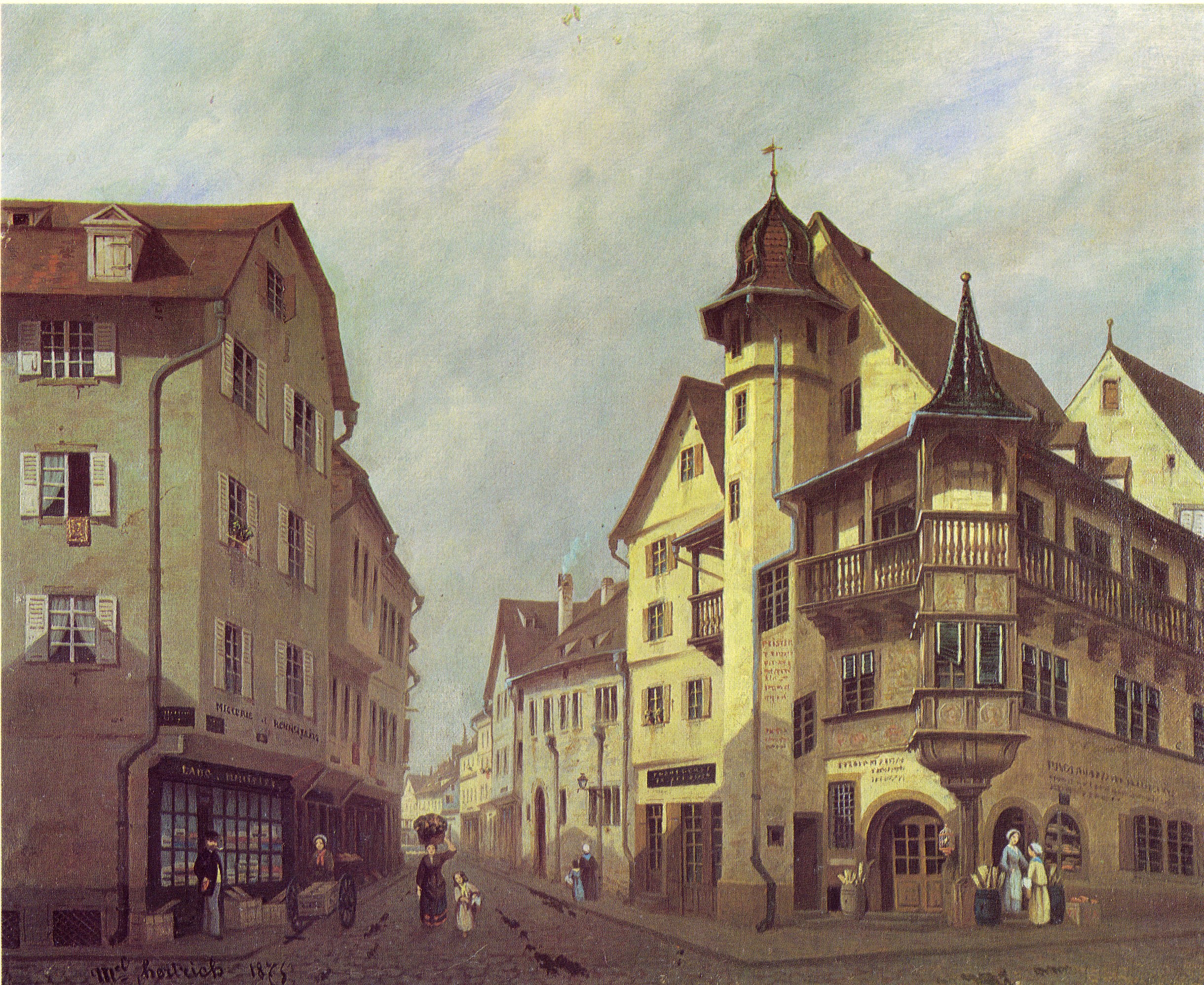From 1679 à 1789 - The French royal city
1680 :
Religious equality is introduced for all city government jobs, although Protestants still make up some two-thirds of the local population.
The military High Command of Upper Alsace headquarters in Colmar, followed by the Upper Alsace commissioner for war, the regional artillery commissioner, the comptroller of the Royal military hospital and the pro
1695 :
Colmar is made chef-lieu de subdélégation, the head city for subdelegation, a new territorial division brought in by the Intendant of Alsace.
1698 :
The Sovereign Council of Alsace is formed in Colmar, making the city the judicial capital of the province of Alsace.
>>The Sovereign Council in Colmar
1714 :
Colmar acquires the nearby seigniory of Hohlandsbourg and cedes St. Peter´s priory to the Jesuits, who had arrived in Colmar in 1698.

The Jesuit church, built by J.J. Sarger.
1735-1744 :
A new hospital is built in the city, on the site of the old Franciscan monastery.
1742-1750 :
Strasbourg architect Jean-Jacques Sarger builds the Jesuit church.
1751 :
Decker, Colmar printer, publishes the first volume of Alsatia Illustrata by the historian Jean Daniel Schoepflin.
1753-1754 :
Voltaire, who is doing research on the history of the Empire, spends thirteen months in Colmar.
>>Voltaire´s troubled stay in Colmar
Voltairian anthology
Colmar, a city that is half German, half- French and wholly Iroquian.
The wine and the people of Colmar are excellent indeed, but they have no good cafés.
Colmar is a devout little city, full of annoyance, where everybody goes to confession, where everybody hates each other and where there are no resources save a few lawyers who are well versed in German public law…
Colmar is a singular little city. I was ceremoniously complimented on my going to Easter mass.
Would you believe that it is not without regret that I am leaving Colmar. My bad reputation occasioned me at first to be snubbed by the Holy Church, but all the honest people of the region soon made up for this scandal.
1769-1771:
Construction of the Sovereign Council building, designed by Chassain.
Beauties of Colmar
You must go to the plains at harvest-time. This is where you can see as much haymaking as you can pretty girls.
Colmar is perhaps the winner. Breasts appear nicely rounded and white. Eyes are large, the heads full of hair, the mouths full of teeth, the arms fine and elegant and the lips pink and smiling. It is the place where all travellers stop and all regiments want to garrison. Fathers say it was better in their day and that the blood in Colmar is losing its quality. Girls of Colmar, worry you not… your blood is the same, it is the blood of the disgruntled old men that has changed. Your fathers may denigrate you but for the process of beauty, it is the children who decide.
1773 :
Colmar has 11,280 inhabitants. Théophile Conrad Pfeffel (1736-1809), a poet and teacher, opens a "Military academy".
>>The Military Academy of Colmar
1775:
The "La Concorde" Masonic lodge is founded in Colmar. It was made up mainly of members of the Sovereign Council and Army officers and its aims were principally Catholic philanthropy.
Colmar begins to be industrialized. The Haussmann printed cloth factory is founded in Logelbach, a suburb of the city.
"On 17 August 1784, at eight o´clock in the morning in Colmar, at the Deux Clefs, I saw her and was struck dumb with joy."
Vittorio Alfiéri meeting up again with Louise de Stollberg, countess of Albany
1785:
Opening of the "Tabagie littéraire" reading club.
Nothing could be more pleasant than eating at the table d´hôte. The main pleasure is in the diversity of the people sharing your table. In the auberge des Trois Rois, we came across amiable, well-educated and honest people. The dining room was very clean, decorated in the German style; triangular mirrors, framed German quotations, earthenware stoves. We were very well served for 30 s per head. The wine waiter was a young man from Colmar, who did his job skilfully and intelligently, the like of which is rarely seen. We ate several excellent German stews. Most innkeepers are lazy good-for-nothings. The one in Colmar ate with his guests.
Alsace in 1782, an anonymous account.

Pfister House by Michel Hertrich, 1875. Unterlinden Museum.
1785-1787:
Pierre Michel d´Ixnard, an architect from Nimes, builds the Salle des actes (theatre) and the library (now part of the Lycée Bartholdi).
1787:
The provincial assembly of Alsace is set up in June and Colmar becomes the chief city of one of the six districts initially defined in preparation for the meeting of the States General.